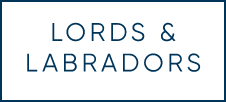Cats are delightful companions, known for their playful and curious nature. However, one behaviour that often frustrates cat owners is scratching. Whether it's your carpet, furniture, or even your curtains, scratching can become a destructive habit if not managed properly. But why do cats scratch in the first place, and more importantly, how can you stop this behaviour to protect your home? In this guide, we'll explore why cats scratch and provide expert tips on how to keep your cat from scratching your carpet, furniture, and more.
Why Do Cats Scratch?
Understanding why cats scratch is crucial in addressing the behaviour. Scratching is a natural and instinctual activity for cats. Here are a few reasons why cats scratch:

- Marking Territory: Cats have scent glands in their paws, and scratching helps them leave both a visual mark and a scent mark, signalling their territory.
- Exercise and Stretching: Scratching allows cats to stretch their muscles, particularly those in their back and shoulders, keeping them agile and healthy.
- Nail Maintenance: Scratching helps cats shed the outer layer of their claws, keeping them sharp and in good condition.
- Stress Relief: Scratching can be a way for cats to relieve stress or frustration.
Knowing these reasons, it's clear that scratching is not something you can—or should—completely eliminate. Instead, the goal is to redirect this natural behaviour to appropriate surfaces.
How to Stop Cats from Scratching Furniture and Carpets
1. Provide a Variety of Scratching Posts and Cat Trees
The first step in preventing your cat from scratching your furniture or carpet is to provide suitable alternatives. Cat trees and scratching posts are essential tools, here at Lords & Labradors we stock a large range of both our own cat trees and other high-quality brands like PetRebels. Here’s how to make them more appealing:
- Location: Place scratching posts in areas where your cat likes to scratch. Cats often scratch near their sleeping areas or in places they frequent, so placing a post nearby can encourage them to use it.
- Variety: Offer different types of scratching surfaces, such as sisal, carpet, and cardboard. Cats have preferences, so providing variety increases the chances they’ll use them.
- Height: Ensure scratching posts are tall enough for your cat to fully stretch out while scratching. This is particularly important for larger cats.

2. Use Deterrents on Unwanted Surfaces
To stop cats from scratching furniture or carpets, you can make those areas less appealing:
- Double-Sided Tape: Cats dislike sticky surfaces. Placing double-sided tape on the edges of furniture or on the carpet where your cat scratches can deter them.
- Furniture Covers: Temporarily cover furniture with protective covers or tin foil. The unusual texture may discourage scratching.
- Scent Deterrents: Some sprays are designed to deter cats from scratching by using scents they find unpleasant. Test these on a small area first to ensure they don’t damage your furniture.
3. Redirect Scratching Behaviour
Whenever you catch your cat scratching something inappropriate, gently redirect them to a scratching post. Reward them with praise, treats, or play when they use the post. Consistency is key here; over time, your cat will learn that scratching the post is rewarding, while scratching the carpet or furniture is not.
4. Trim Your Cat’s Nails Regularly
Trimming your cat’s nails can reduce the damage caused by scratching. If your cat resists nail trimming, try to make the experience as stress-free as possible:
- Use Sharp, High-Quality Clippers: Dull clippers can cause the nails to splinter, making the process more uncomfortable for your cat. We particularly like the Ancol cat nail clippers.
- Take It Slow: Trim just a few nails at a time until your cat becomes more comfortable with the process.
- Consider Professional Help: If your cat is particularly resistant, you might want to seek help from a veterinarian or professional groomer.
5. Understand Your Cat’s Behaviour

Sometimes, scratching can be a sign of boredom or stress. Ensuring your cat has plenty of mental and physical stimulation can help reduce destructive behaviours. Provide plenty of toys, engage in interactive play, and consider puzzle feeders to keep your cat occupied. We love the Catit senses circuits for keeping our cat’s brains busy, all the Catit senses products can be used in conjunction with each other so you can keep changing up the set and build the ultimate kitty playground that will appeal to all of your cat's senses.
How Many Claws Do Cats Have?
Understanding your cat's anatomy can also help in managing their scratching behaviour. Cats typically have 18 claws—five on each of their front paws and four on each of their back paws. These claws are retractable, allowing cats to extend or retract them depending on their activity.
Conclusion: Redirect, Don’t Eliminate
Scratching is a natural behaviour for cats, one that serves various important functions. The key to preventing destructive scratching lies in providing appropriate outlets and gently guiding your cat towards them. By offering a variety of scratching posts, using deterrents, and maintaining your cat’s nails, you can protect your furniture and carpets while keeping your feline friend happy and healthy.
Remember, patience and consistency are crucial. It might take some time for your cat to adjust to new scratching surfaces, but with the right approach, you can successfully stop your cat from scratching furniture and carpets, preserving both your home and your bond with your pet.
Shop our range of luxury cat scratch posts and cat trees here, purrfect for stopping your cat scratching your carpets and furniture!

































































































